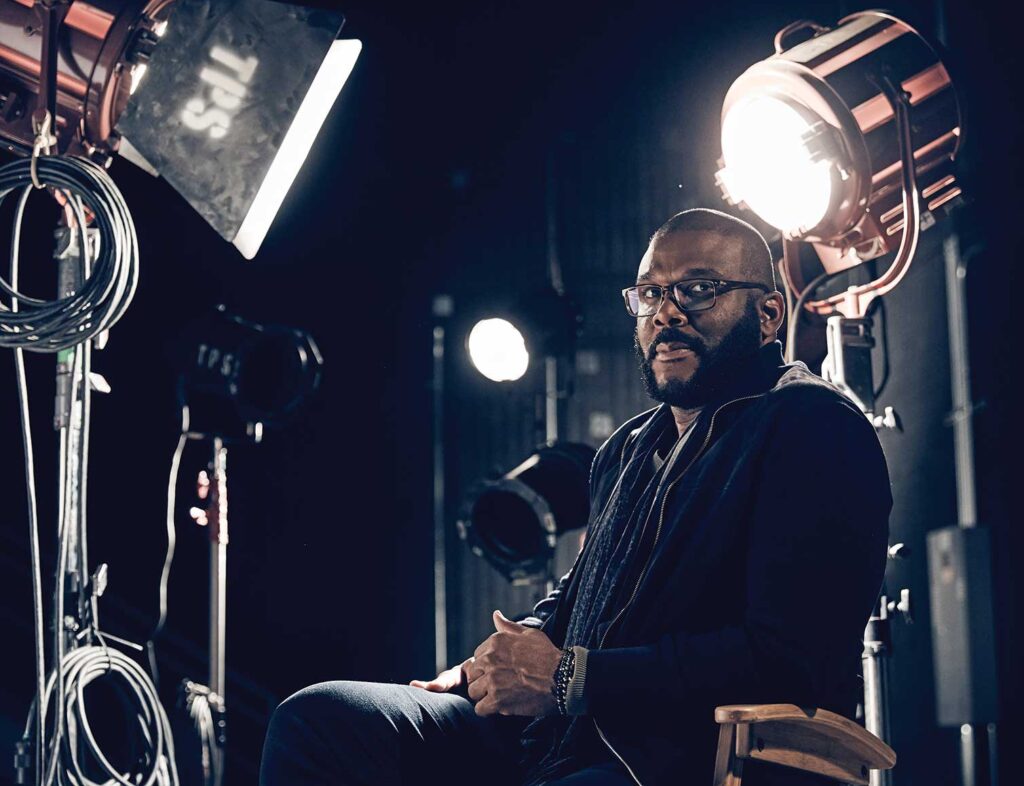Tyler Perry’s rags to riches journey chronicled in documentary ‘Maxine’s Baby’

Few people know what it’s like to acquire an asset from the United States Army, but Tyler Perry does. The former Fort McPherson military base is the current site of Tyler Perry Studios, a 330-acre film studio lot in Atlanta. Portions of a new documentary film, “Maxine’s Baby: The Tyler Perry Story,” directed by Gelila Bekele and Armani Ortiz, were filmed there.
Perry is known for writing, directing and producing plays, films and television shows like “I Can Do Bad All by Myself,” “House of Payne,” and “The Haves and the Have Nots.” His claim to fame is the ever-present Madea, a character whose name is short for “mother dear.” Madea is Tyler Perry dressed as a gun-toting, foul-mouthed and tough-loving matriarchal figure in her 60s; she has the distinct talent of cursing out characters and teaching them life lessons in the same breath.

Gelila Bekele, co-director and producer of “Maxine’s Baby: The Tyler Perry Story.” PHOTO: COURTESY OF AMAZON MGM STUDIOS
Perry’s hero’s journey is encapsulated in the one hour and 55-minute film. His story begins in New Orleans as a little boy trying to flee his abusive alcoholic father while finding strength through his mother, Maxine, and his faith in God. In his 20s, he moves to Atlanta to make a name for himself on the Chitlin’ Circuit, a colloquial term for Black theater venues primarily in the South and Midwest. Before his big break, Perry experiences homelessness and humiliating setbacks. Eventually, through hard work, dedication and only saying yes to offers that give him complete creative control, he becomes a billionaire and the owner of one of America’s largest film studios.
Perry’s journey is the quintessential American dream.
This American dream, however, is told unremarkably here. The documentary consists of interviews, archival footage and behind-the-scenes recordings. It shows an incredibly touching and impressive relationship between Perry and his mother. Talking heads like Mellody Hobson and Oprah Winfrey make appearances. Yet, the film’s repeated
voiceovers prove distracting and too overt at times. If you want to play a game, count how many times Oprah says, “Do not play him small” in the film.
To Bekele’s and Ortiz’ credit, the movie does not shy away from Perry’s critics. There is archival footage of Spike Lee saying Perry’s films were “coonery buffoonery” and criticizing Perry’s audience for their lack of taste. Additional critiques come from writer Carl Hancock Rux and professor Samantha Sheppard, who perceive Perry’s work as minstrelsy and misogyny.
Friends and supporters outweigh the critics in this rags-to-riches documentary. Many of those interviewed commend Perry for knowing his audience. They are the 18-to-64-year-old Southern Black women or men who have been through trauma, usually of the violent or sexual kind, and may attend church as a result. If they don’t go to church, they know many people who do. Perry was born into this market. He writes what he knows. It’s an audience frequently overlooked by Hollywood, but not by Perry. However, as inspiring as Perry’s path may be to viewers, it is difficult to fully accept the full integrity of the documentary, since it never discusses co-director Bekele’s relationship with Perry.
Bekele is Perry’s ex-girlfriend and mother to his son, Aman. They were together for over a decade, yet their relationship is never discussed. Their relationship is what allows unfettered access to Perry, Perry’s family and friends, and his Rolodex of Hollywood hitters. This lack of acknowledgment feels irresponsible.
Although the doc has its flaws, it poses an interesting question: Why can’t people who don’t have the same taste as film snobs have their fun and profit too?
“Maxine’s Baby: The Tyler Perry Story” comes to Amazon Prime Video on Nov. 17.






